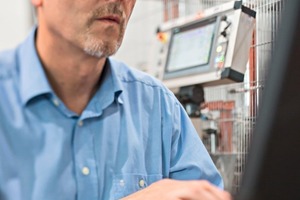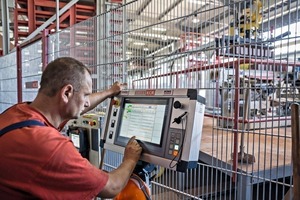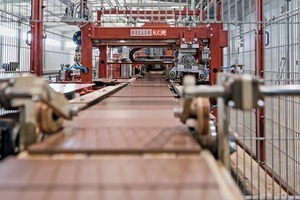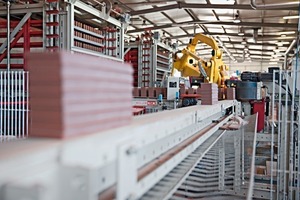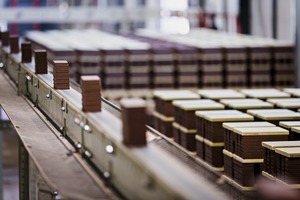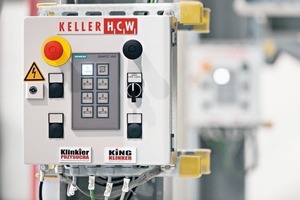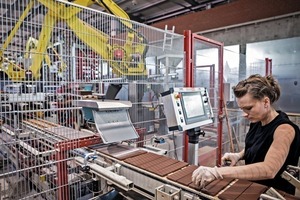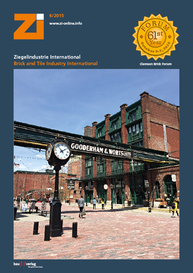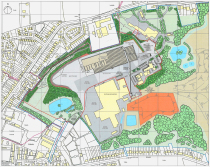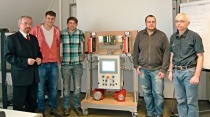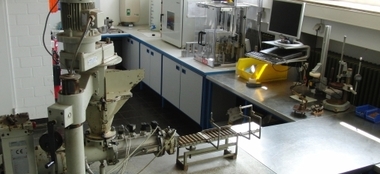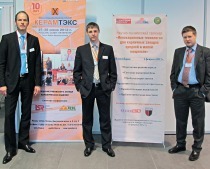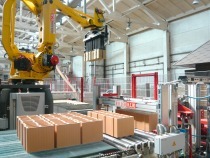Keller HCW optimizes clinker production at Zakłady Płytek Ceramicznych Przysucha S.A., Poland
Since 1972, the Polish company Zakłady Płytek Ceramicznych Przysucha S.A., a manufacturer of ceramic products made of natural materials, has been producing high-quality end-products. “For a much-needed expansion of our production we have invested in a completely new production line for clinker products”, says Marek Szymkowiak, Senior Director of Corporate Development and Investment. While approximately 30 to 40 t clinkers per day were made in the past, it is possible to produce further 70 t per day with the new plant since summer 2013. The ceramic clinker slabs are produced in an extrusion process: On a more than 100-m-long production line, a homogeneous blend of different raw materials is prepared and then pressed through the dies of an extruder. Subsequently, these wet clinkers undergo a drying and firing process, and in the end they are packaged and prepared for shipment.
“The key factor for us was to have a reliable partner for this big investment who is capable of planning and building the entire plant for us and who can give us the necessary service support”, explains Marek Szymkowiak. That is why Keller HCW GmbH, a leading provider of complete plants for the heavy clay industry, was commissioned with the implementation of this project.
Josef Schröter, Head of Electrical Engineering, Automation and Process Technology at Keller HCW, describes the situation: “The manufacturers of ceramic products ask for an extremely high availability of their plants. Integrated solutions, such as Totally Integrated Automation (TIA) offered by Siemens are an ideal tool for this purpose.”
A number of important novelties were employed for the first time for the “Przysucha” project. For example, the operating panels in the production line were not equipped as before with the typical long travel keyboards but with KP8F Key Panels. “We now have eight operating keys which can be software-configured according to special plant requirements. At the same time, a fail-safe input on the KP8F includes the emergency stop button for the plant in our plant safety plan”, emphasizes Schröter. The communication between the Simatic HMI comfort panel and the failsafe control system is assured with Profinet. The 24-V DC power supply is simultaneously connected and looped through the key panel. This is very fast and saves space, time and costs in comparison to conventional wiring used for a key button solution. The Profisafe communication profile smoothly directs the information to the fail-safe Simatic S7 control system when the emergency stop button is pressed on the control panel. Separate emergency-off contactor combinations are now eliminated completely. The entire system diagnostics is already included ready to use in the hardware and software.
The actual plant visualization is controlled with SIMATIC HMI comfort panels with touch function, which can also easily be integrated in the communication structure of the clinker production line via Profinet. The high-resolution widescreen displays are ideal for a detailed and accurate visualization of the sub-processes, parameters and diagnostic messages that the control system automatically provides. Marek Szymkowiak summarizes: “Our colleagues at the production line are enthusiastic about the intuitive and user-friendly handling with the key panels and touch panels.”
Consistency in engineering
In addition to innovative solutions for plant operation and visualization, the developers at Keller HCW introduced the innovative engineering framework TIA Portal to embed the new comfort panels into the Simatic control system. As a first step, control system projects are still to be planned with Step 7. The goal is, however, to migrate project planning for PLCs completely into the TIA portal to save even more time in the future. Schröter is excited about the new possibilities this software offers. While maintaining the previous routines for operation with the known tools, all editors in the TIA Portal access a common database. For the integration of the KP8F, for example, the corresponding device only had to be picked from a predefined selection and then assigned with the required parameters. The same applies to the comfort panels and the other Siemens equipment within the plant automation scheme. “This eliminates the time-consuming information transfer from one program to another”, he summarizes. Thanks to the TIA portal, even the safety technology can be more easily developed in parallel to the standard automation features, and it goes down to the software and hardware field level at little cost as the KP8F Key Panel example shows. Schröter gets right to the point: “The appropriate transfer of the software to the panels gives us the opportunity to operate all machines with one tool.”
TIA wins in every aspect
In the Polish clinker production line Keller HCW has implemented fundamental optimizations that will be adopted in many other plants in the future. The use of operating and visualization solutions together with the TIA portal gives the Polish company a technological lead and reduces engineering costs significantly. A convenient side-effect is the time-saving factor for minimized wiring requirements. A possible future expansion of the plant would thus be much easier. The integrated system diagnostics also significantly reduces downtimes and times needed for maintenance. These are key arguments for Josef Schröter and Marek Szymkowiak for a consistent and sustainable implementation of Totally Integrated Automation.
www.keller.de

